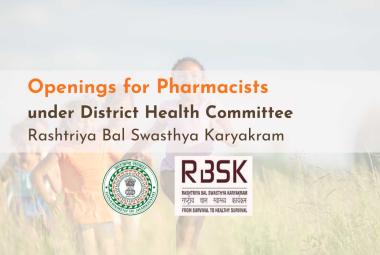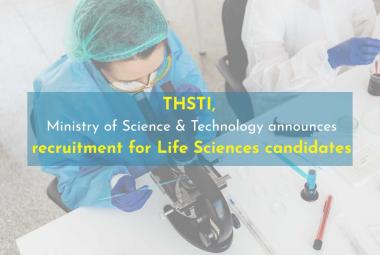{ DOWNLOAD AS PDF }
ABOUT AUTHORS:
Nandu Kayande1*, Pankaj Kushwah2
1HOD Department of Pharmacology
2Department of Pharmacognosy
Nimar Institute of Pharmacy, Dhamnod,
Opp.ITI, Maheshwar Road Dhamnod, Dhar. M.P.
nandu_kayande@rediffmail.com
ABSTRACT:
The antitumor activity of the ethanolic extract of leaves of boerhaavia diffusa L. (EBD) has been evaluated against Dalton’s ascitic lymphoma (DAL) in Swiss albino mice at the dose of 250 & 500 mg/kg, body weight. The experimental parameters used were tumour volume, tumour cell count, viable tumour cell count, mean survival time and increase in life span to assess antitumour activity. The extract administered orally for 14 consecutive days to tumor bearing group of animals. The extract increase the life span of DAL treated mice and restore the hematological parameters as compared with the DAL bearing mice in dose dependant manner. The study revealed that the EBD showed significant antitumour activity in tested animal models.
INTRODUCTION
Boerhaavia diffusa L. (Nyctaginaceae), commonly known as 'Punarnava' in the Indian system of medicine, is a perennial creeping herb found throughout the waste land of India. The roots are reputed to be diuretic and laxative and are given for the treatment of anasarca, ascites and jaundice1. The Boerhaavia sp. has ancient medicinal use in different societies from the times of the B.C. The herbal medicine has evolved and changed through the years. A number of plant products have been identified through phyto-chemistry and the extract of their different plant parts are useful in various diseases without side effects.2
PHARMACOGNOSY:
Scientific Name: Boerhaavia diffusa Linn. Syn. B. repens; B. repens Family: Nyctaginaceae, Family Name: Hog weed, Horse Purslane, Common Indian Names
Gujarati: Dholia-saturdo, Moto-satoda. Hindi: Snathikari Kannada: Kommegida Marathi: Tambadivasu Sanskrit: Punarnava, Raktakanda, Shothaghni, Varshabhu Bengali: Punurnava Tamil: Mukaratee-Kirei Telugu: Punernava, Habitat: Grows as common weed., Useful Parts: Root, leaves and seeds.3
PHYTOCHEMISTRY: The Boerhaavia diffusa plant contains a large number of such compounds as flavonoids, alkaloids, steroids, triterpenoids, lipids, lignins, carbohydrates, proteins, and glycoproteins. Punarnavine C17H22N2O m.p. 236–237°C12,13. boeravinone A-F14,15, hypoxanthine 9-Larabinofuranoside16 , ursolic acid17, punarnavoside18, lirodendrin19, and a glycoprotein having a molecular weight of 16– 20 kDa have been isolated and studied in detail for their biological activity20. Punarnava also contains arachidic acid, β-Sitosterol, α-2-sitosterol, palmitic acid, ester of β-sitosterol, tetracosanoic, hexacosonoic, stearic, urosilic acid, Hentriacontane, β-Ecdysone, triacontanol etc. Phytochemical screening of the roots from garden-grown in vivo plants of B. diffusa of different ages revealed that the maximum alkaloid content (2%) accumulated in the roots of 3-yearold mature plants. The aim of the present study was to evaluate antitumour activity of ethanolic extract of leaves of boerhaavia diffusa L. (EBD) on Dalton’s ascitic lymphoma (DAL) in Swiss Albino Mice.3,4,5
MATERIAL AND METHODS6,7,8,9,10,11
Plant material and extraction
The leaves of boerhaavia diffusa L, were collected from th district of Jalna Maharashtra, India in the month of September 2010 and identified and authenticated at local Plant Anatomy and Biology Department, Jalna, India. A voucher specimen (SGSPSIOP/10/46) has been kept in our laboratory for future reference. The air-dried and coarsely powdered leaves (400g) extracted successively with 1.5 L each of petroleum ether (60–800 C) and ethanol in a Soxhlet extractor for 72 h. The extracts were concentrated to dryness under reduced pressure and controlled temperature (40–500 C). The petroleum ether extract yielded a yellowish green sticky semisolid, weighing 3 g. The ethanol extracts yielded brown and semi-solid residues, weighing 7.0 g.
Animals
The experimental protocol was approved by the Institutional Animal Ethical Committee (IAEC) of the SGSPS Institute of Pharmacy, Maharashtra, India. Mature male Swiss albino mice weighing 20-25g were housed in standard isolation cages (45×35×25 cm) under environmentally controlled conditions with 12-h light/12-h dark cycle. They were allowed free access to water, standard laboratory chow (Hindustan Liver Pvt. Ltd, Mumbai) given food and water ad libitum. After sufficient period of acclimatization, they were used to evaluate antitumour activity.
Tumour cell lines
Dalton’s ascitic lymphoma (DAL) cells were obtained through the courtesy of the National Institute of Virology, Pune, India. DAL cells were maintained by weekly intraperitoneal (i.p.)
inoculation of 1 x 106 cells/mouse.8
Antitumour activity in mice
After acclimatization, mature male Swiss albino mice divided into four groups (n=10) and given food and water ad libitum. All the groups (Table 1) except group I were injected with DAL Cells (1×106 cells/mouse.i.p.). This was taken as day 0. Group I served as normal saline control (5 ml/kg, p.o.) and Group II served as DAL control. On day 1, the EBD at a dose of 250 and 500 mg/kg body weight (Gr-III & IV) were administered orally and continued for 14 consecutive days. The dose of EBD was selected based on previous study on hepatoprotective activity.10 On day 15, five mice of each group were sacrificed 24 h after the last dose and the rest were kept with food and water ad libitum to check the increase in the life span of the tumor hosts. The effect of ethanol extract on tumor growth and host’s survival time were examined by studying the parameters like tumor volume, tumor cell count, viable tumor cell count, nonviable tumor cell count, mean survival time and increase in life span.8, 11
Determination of tumor volume
The mice were dissected and the ascitic fluid was collected from the peritoneal cavity. The volume was measured by taking it in a graduated centrifuge tube and packed cell volume determined by centrifuging at 1000 g for 5 min.
Determination of tumor cell count
The ascitic fluid was taken in a RBC pipette and diluted 1000 times. Then a drop of the diluted cell suspension was placed on the Neubauer counting chamber and the number of cells in 64 small squares was counted.
Estimation of viable tumor cell count
The cells were then stained with Trypan blue (0.4% in normal saline) dye. The cells that did not take up the dye were viable and those that took the stain were nonviable. These viable and nonviable cells were counted.
Cell count = (No. of cells x Dilution) / (Area x Thickness of liquid film)
Percentage increase life span
Recording the mortality monitored the effect of the EBD on tumor growth and percentage increase in life span (ILS %) were calculated.12
ILS (%) = [(Mean survival of treated group/ Mean survival of control group)-1]x100
Mean survival time = [1st Death + Last Death] / 2
Hematological studies
The effect of EBD on peripheral blood was investigated. RBC, WBC counts and estimation of hemoglobin were done by standard procedures from freely flowing tail vein blood. Serum protein conc. was estimated by Lowry’s method and packed cell volume (PCV) was determined by the method described by Docie et al.13.
Statistical analysis
The experimental results were expressed as the mean ± S.E.M. Data were assessed by the method of One way ANOVA followed by Dunnett post hoc test. P value of <0.05 was considered as statistically significant.
RESULTS
Results of the preliminary phytochemical analysis carried out on the crude ethanol extract indicated the presence of alkaloids, glycosides, lignin, flavonoids and saponins. The effect of EBD on the survival of tumour bearing mice showed MST (Table 1) for the tumour control group (DAL treated) to be 18.40±1.41 days, while it was 31.12±1.0days (41%) and 33.12±0.9 days (46.23%) for the group treated with EBD at the dose of 250 & 500 mg/kg respectively. The average number of tumour volume (Table 1) in DAL treated animals was found to be 2.68±0.11. EBD treatment at both dose level significantly (P<0.05) reduced tumour volume which was found to be 1.36±0.10 and 0.98±0.04 respectively. Viable cell count of the tumor bearing mice was significantly decreased while non- viable cell count were increased in EBD treated groups in dose dependant fashion when compared with DAL treated group. Moreover, hematological parameters of (Table 2) tumour bearing mice on day 15 were found to be significantly altered from normal group. The total WBC count, protein and PCV were found to be increased with a reduction of the haemoglobin and RBC. In a differential count of WBC, the percent of neutrophils increased while the lymphocyte count decreased. At the same time interval, EBD treatment could change those altered parameters to near normal.
DISCUSSION
In cancer chemotherapy, the major problems that are being encountered are of myelosuppression and anaemia17,18 but the results have clearly shown that EBD has not only brought back hemoglobin content to normal but also the RBC count to normal. Analysis of the other hematological parameters showed minimum toxic effect in the mice which were treated with EBD. After 14 days of transplantation, EBD treated groups were able to reverse the changes in the haemotological parameters consequent to tumour inoculation. All these data point to the possibility of developing an ethanolic extract of leaves of boerhaavia diffusa as a novel, potential agent in the area of cancer chemotherapy. Flavonoids have a chemopreventive role in cancer through their effects on signal transduction in cell proliferation21 and angiogenesis. Thus, antitumour effect produced by the EBD may be due to its flavonoids as well as its antioxidant potential. Thus our present study suggests that EBD possess potent anticancer activity and increase life span. Further studies to characterize the active principle and elucidate the mechanism of action of EBD are in progress using different cell lines.
Table 1. Effect of ethanolic extract of Boerhaavia Diffusaon survival time, life span, tumor volume, viable and non-viable cell count in DAL bearing mice.
|
Treatment group |
Survival time (Days) |
Increase of life span |
Tumour volume |
Viable cell count X 106 cells/ml |
Non-Viable cell count X 106 cells/ml |
|
Normal Saline( 5ml/kg p.o) |
-- |
-- |
-- |
-- |
-- |
|
DAL control (1 x 106 cells ) |
18.40±1.41 |
-- |
2.68±0.11 |
8.41±0.12 |
2.41±0.20 |
|
DAL (1 x 106 cells ) + EBD (250 mg/kg p.o) |
31.12±1.0* |
41.00 |
1.36±0.10* |
2.89±0.02* |
0.91±0.05* |
|
DAL (1 x 106 cells ) + EBD (250 mg/kg p.o) |
33.12±0.9* |
46.23 |
0.98±0.04* |
2.01±0.02* |
1.05±0.06* |
Statistical significance (p) calculated by one-way ANOVA followed by Dunnett’s test.
*p < 0.01 calculated by comparing treated groups with DAL control group.
Table 2. Effect of ethanolic extract of Boerhaavia Diffusaon hematological parameters in dal bearing mice.
|
Treatment group |
Hb (g%) |
RBC (million/mm3) |
WBC(103 cells/mm3) |
Proteins (g%) |
PCV (mm) |
|
Normal Saline( 5ml/kg p.o) |
12.2±0.1 |
4.5±0.2 |
7.1±0.1 |
7.4±0.1 |
15.6±0.7 |
|
DAL control (1 x 106 cells ) |
6.8±0.1a** |
2.8±0.1a** |
14.2±1.0a** |
13.6±1.2a** |
24..6±0.2a** |
|
DAL (1 x 106 cells ) + EBD (250 mg/kg p.o) |
10.1±0.2b** |
4.6±0.5b** |
10.2±0.7b* |
9.98±0.01b* |
20.2±0.12b** |
|
DAL (1 x 106 cells ) + EBD (250 mg/kg p.o) |
12.4±0.4b** |
5.3±0.23b** |
7.6±0.5b** |
8.6±0.11b** |
16.4±0.1b** |
Statistical significance (p) calculated by one-way ANOVA followed by Dunnett’s test.
*P < 0.05, **P < 0.01, nsP > 0.05; a vs. Normal group, b vs. DAL control. n = 5.
REFERENCES
1. Saevan N, Koyosomboon S, Chantrapromma K, anti-tyrosinase and anticancer activities of flavonoids from blumea balsamnifera DC, Journal of Medicinal Plant Research, 2011,5(6),1018-25.
2. Manu K, Kuttan G, effect of punarnavine , an alkaloid from boerhaavia diffusa linn, on cell mediated immune response and TIMP-1 in B16F-10 metastatic malonema bearing mice, Immunopharmacology and immunutoxicology, 2007, 29,3(4),569-585.
3. AR Mahesh, Harish Kumar, Ranganath MK and Raviraj Anand Devkar, Detail Study on Boerhaavia Diffusa Plant forits Medicinal Importance- A Review, Research Journal of Pharmaceutical Sciences, Vol. 1(1), 28-36, September (2012).
4. Kuldeep Rajpoot, R. N. Mishra, Boerhaavia diffusa roots (Punarnava mool) – Review as Rasayan (Rejuvenator / Antiaging), International Journal of Research in Pharmaceutical and Biomedical Sciences, Vol. 2(4) Oct - Dec 2011.
5. Mother Herbs and Agro Products, motherherbs.com/boerhaavia-diffusa.html.
6. Gothoskar S.V, Ranadive K.J. Anticancer screening of SAN-AB; an extract of marking nut,Semicarpus anacardium, Indian Journal of Experimental Biology, 1971, 9, 372-375.
7. Babu T.D, Kuttan G, Padikkala J. Cytotoxic and antitumor property of certain taxa of Umbelliferae with special reference to Centella asiatica (L.) Urban. Journal of Ethnopharmacology, 1995, 48, 53–57.
8. Tandon V.R, Khajuria V, Kapoor B, Kour D, Gupta S. Hepatoprotective activity of Vitex negundo leaf extract against anti-tubercular drugs induced hepatotoxicity. Fitoterapia, 2008, 79, 533–538.
9. Mazumder U.K, Gupta M, Maiti S, Mukherjee M. Antitumor activity of Gygrophila spinosa onEhrlich ascites carcinoma and sarcoma-180 induced mice. Indian Journal of Experimental Biology, 1997, 35, 473-477.
10. Sur P and Ganguly D.K. Tea plant root extract (TRE) as an antineoplastic agent. Planta Med, 1994, 60, 106-109.
11. Dacie JV, Lewis SM. Practical Hematology. 2nd ed. J and A Churchill, London. 1958. p. 38-48.
12. D’Armour F.E, Blood F.R and Belden D.A. (The Manual for Laboratory Work in MammalianPhysiology. 3rd ed. The University of Chicago Press, Illinois. 1965. p.4-6.
13. Tiwari O.P, Tripathi Y.B. Antioxidant properties of different fractions of Vitex negundo Linn. Food Chemistry, 2007, 100, 1170–1176.
REFERENCE ID: PHARMATUTOR-ART-2170
|
PharmaTutor (ISSN: 2347 - 7881) Volume 2, Issue 5 Received On: 29/03/2014; Accepted On: 04/04/2014; Published On: 01/05/2014 How to cite this article: N Kayande, P Kushwah; Invitro and In Vivo Evaluation of Anticancer Activity of Boerhaavia Diffusa Linn in Experimental Animals; PharmaTutor; 2014; 2(5); 133-137 |
NOW YOU CAN ALSO PUBLISH YOUR ARTICLE ONLINE.
SUBMIT YOUR ARTICLE/PROJECT AT articles@pharmatutor.org
Subscribe to Pharmatutor Alerts by Email
FIND OUT MORE ARTICLES AT OUR DATABASE









